No, B6 is not a vehicle armoring level
„Whether you buy a cheap armored vehicle or go to a singles party drunk, you end up getting f****“ says the barely sober Australian security consultant, explaining the state of the armored vehicle market as we chat at one of the parties on the sidelines of the IDEX arms fair.
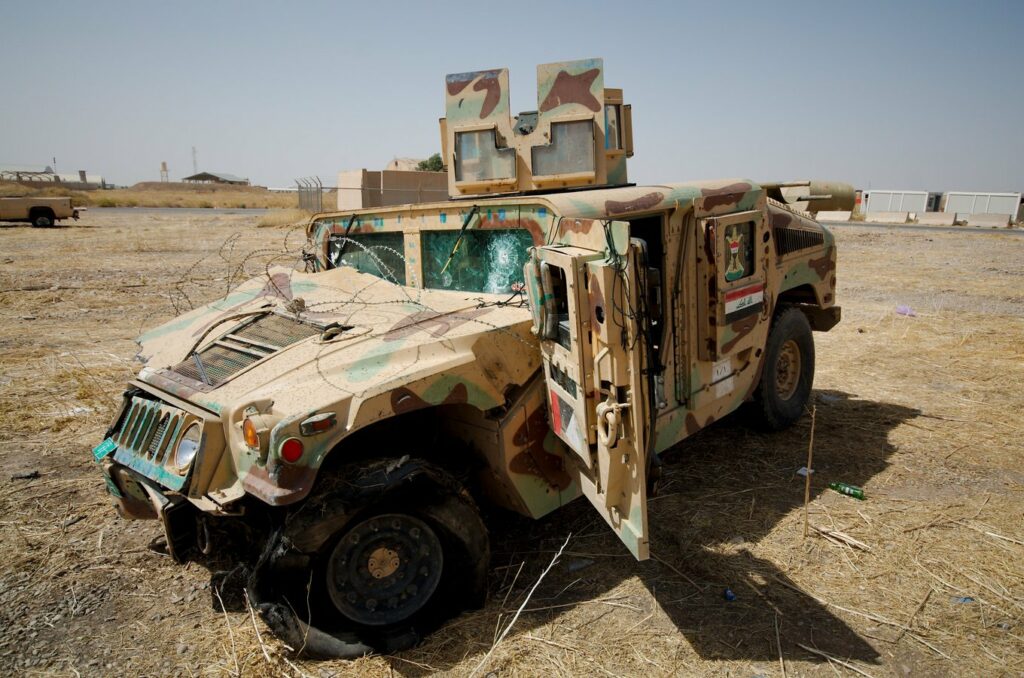
And it strikes me that the comparison is not as bad as one might initially think. You usually have too little idea of what you’re up against, are subject to certain constraints and are dependent on what’s available. The risk of having a big problem in the long run is relatively small – but still there somehow. And it is very complicated in detail to intercept this residual risk through good preparation.
I know, what I’m talking about
I have been driven around in dozens of specially protected vehicles in my life. In Kurdistan-Iraq, Afghanistan, Israel, Germany and Ukraine. From the really ratty to the very high end. I’m an armored vehicle security driver myself and have learned to drive six-ton VR9 Land Cruisers in convoy, make escape turns, rescue people from overturned vehicles in sixty seconds and more. Over the years, I’ve seen a lot of manufacturers and a lot of cars get shot up. Thus, I trust myself to tell a good vehicle from a bad one. All of that took years, though. And I have complete freedom of choice when it comes to making a purchase for my own company. Bigger NGOs and companies are involved in far more complicated decision-making processes. In the past few days, I have talked to dozens of people about the various detailed problems. So I’ll try to explain what the problems are.
Who is buying armored vehicles?
When I was talking about armored vehicles recently, a friend said to me „Who, besides your friends with shady jobs, actually cares about this topic?!“ – Well, many. And those with shady jobs least of all. For example, domestic customers include police special forces. The GSG9 needs low-profile but very safe vehicles with very specific requirements. The officers who end up driving have a good chance of getting their wishes through and the price is inevitably sometimes higher. The ministries need quantities of such cars for their principals to be protected. These can be not only politicians and ambassadors, but also ordinary people who are particularly vulnerable due to some circumstances. Businessmen in the top segment also rely on such vehicles. Cash-in-transit vehicles also belong to this category, but they are a completely different matter. In crisis areas, it is the press, aid organizations such as the Red Cross, the EU, the UN and even embassies. And very rarely, people who simply want to have such vehicles to show off. In Afghanistan alone, there were around ten thousand armored vehicles on the road – not counting the military vehicles, which might exceed this number. That alone is more than a billion in order value in a few years.
Where to buy armored vehicles?
When you want a vehicle, the problem already starts: Where do you buy it? In theory, it’s quite simple: the major manufacturers such as BMW, Mercedes and Audi offer such vehicles in their range. They are experienced at it and have equipped countless government agencies, militaries and presidents. So what could go wrong? For example, not wanting a vehicle from them. There can be many reasons for that. The factory armored vehicles are 500,000€ or more. That is no longer attractive to many of the buyers. Other reasons are embargos, or the (in)conspicuousness of the vehicles. An Audi A8, BMW 7-series or the S-class are quite conspicuous in the Congo or Iraq. A Toyota Land Cruiser less so. That’s why the Landi is probably one of the most common vehicles of this type. It offers a lot of space, drives quickly, is also suitable for bad roads and above all can bear a lot of overload. In the meantime, Land Cruisers can be driven with a gross vehicle weight of seven tons – the weight of a small truck. Therefore, there are also countless suppliers of this vehicle. Worldwide, there are probably hundreds – no one has ever counted them. In the United Arab Emirates alone, there are more than twenty. So how do you choose a provider? This is where it gets tricky
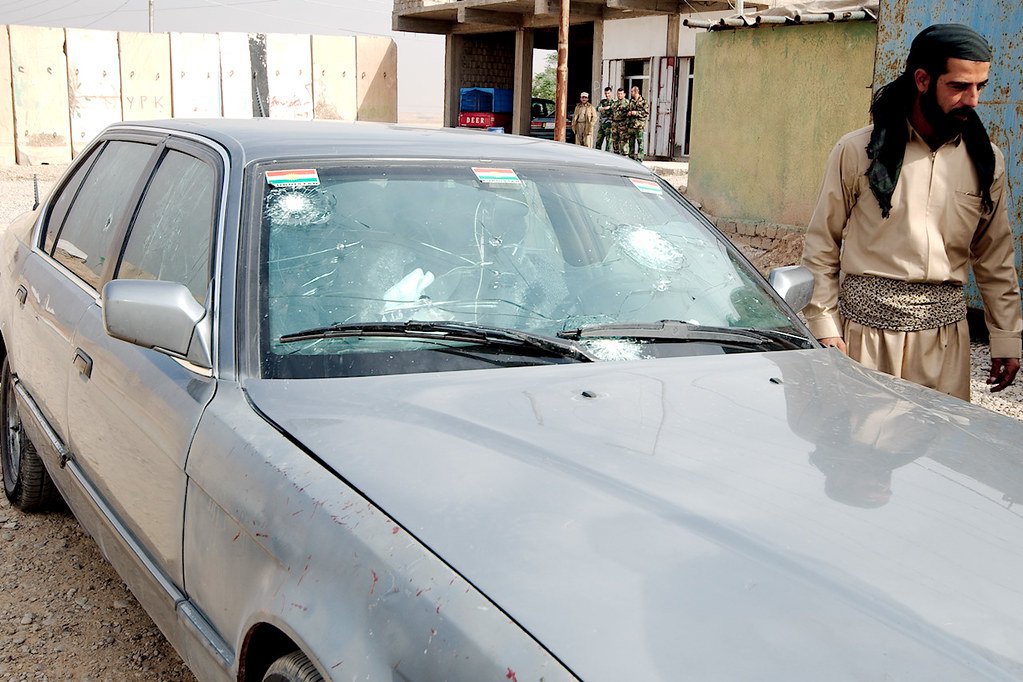
What is bulletproof? B6? B7? VPAM? BRV? VR7?
Let’s get to the heart of the matter: when is the car safe? Well … it depends. If you ask a group of half-knowledgeable people, you’ll get tips like „Well, it has to be B6!“ or „Just ask someone who has a car like that!“. Both tips are not very helpful. There is the standard EN 1522 (B1 – B7) and EN 1063 (BR1 – BR7), which divide metal and glass materials into classes. The higher the number, the better. So, if we take a vehicle that has B6 doors and BR6 windows, the material from which they were made was tested in a lab. To do this, the materials are shot at from certain distances and angles with certain ammunition and are not allowed to let anything through. There is little interpretation there either and no cheating is possible. The problem is that it is a material test. It is not tested whether the finished vehicle is safe. Comparable to sunscreen: the cream was tested in a lab and is safe where you put it on. Where you forget to apply it, you can get burned. Back to the B6-Car: The headlights are not tested, nor are the door locks or the window regulator controls and so on. If an attacker now shoots at the land cruisers headlight, the projectile behind it can find its way through one of the seven opening between the engine compartment and the passenger compartment. There, for example, the steering rod passes through, or shafts from the air conditioning system. The material around it is safe – the milled hole in the material is not, of course.
A shot to the door locks can cause the steel plate inside to bend and shatter the window regulator control panel, for example. The plastic splinters can injure the occupants. This is called secondary propellment. This is how bank manager Alfred Herrhausen died in 1989 in Germany in an armoured vehicle. A proper manufacturer should not simply let these gaps exist, but that costs money again. And he will only build it differently if the customer demands it.
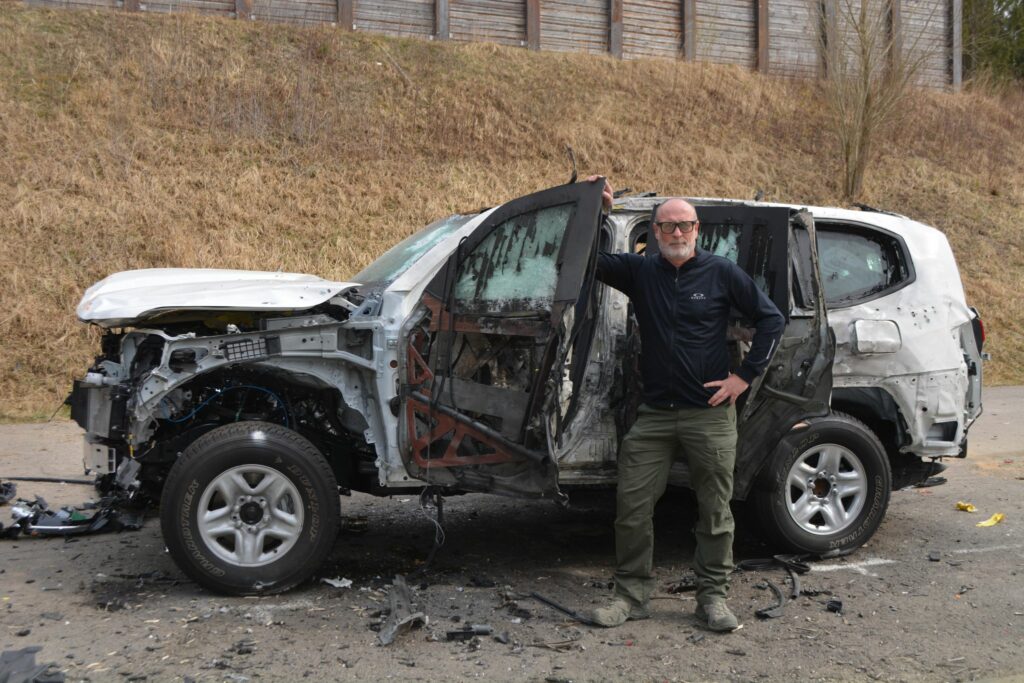
So they authorities recognized these problems and tried to supplement the „simple“ shooting tests with more complex VR protocols. The entire vehicle is built and then shot at hundreds of times and blown up at the end with a side blast. Dummies with accelerometers sit in the vehicle. Just since 2022, manufacturers have been cursing the complexity these VR-certification tests have reached.
The B6-cars don’t have these problems. They have never been certified at all. there you only get certificates of the material before it was installed.
But customers can assume that a VR-Certified vehicle is safe. The categories are called VR. The most important are VR7 (holds common assault rifles) and VR9 (holds common assault rifles with armor-piercing ammunition). They should also be more realistic. Will I be all right with VR9? Unfortunately, no.
How to convert a car to an armored vehicle?
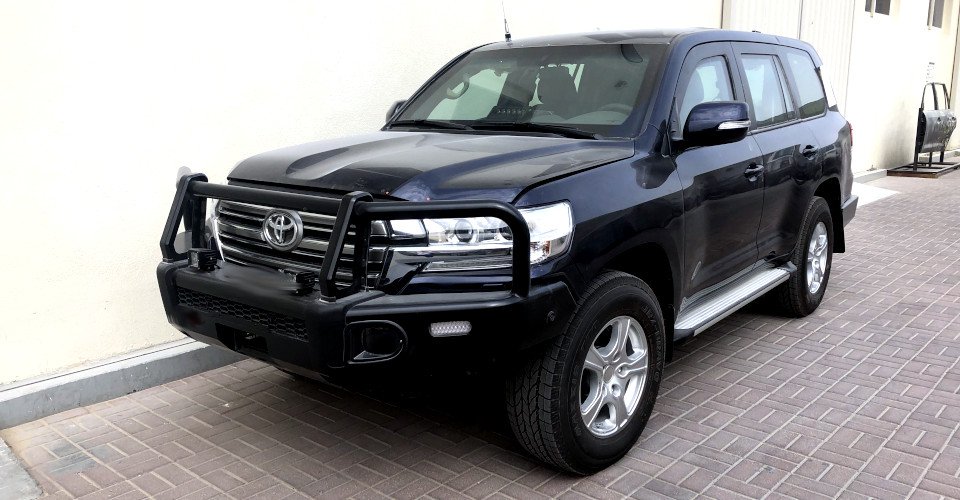
While a German „Beschussamt“ (bombardment office) is trusted worldwide, in this industry you often have to work with private companies that perform the certification. Building and testing a single Land Cruiser costs hundreds of thousands of euros and takes months. First, you have to build your prototype vehicle. You have to rely on subcontractors for many parts like windows and suspension. You have to change at least the front windshield and the windows next to the passengers. The tailgate and the rear side windows in the trunk are often original, because steel plates are mounted from the inside to provide protection. Therefore, there is often no view to the rear – or only through a small window in the steel plate of the tailgate. Steel plates are mounted on the doors, roof and floor, leaving no gaps if possible. Now there are quite a few areas that can nevertheless become dangerous. In addition to the door locks and headlights already mentioned, the door frame is also one of them. If it is not sufficiently protected by overlaps, you can simply shoot through it, if you get the right angle.
Here we go into another topic where the details seem simple but can get very complicated: Steel and welding. There are quite a few manufacturers for the B6 steel. They all meet the basic requirements – but each steel is different. One can be bent well, another not. Depending on the exact way you want to build your vehicle, you need one or the other. If you can’t bend it, you have to weld or screw it. And here, too, opinions differ. I talked to two big guys about their respective solutions. Both can explain to me well and conclusively why their way is the right way, and both build solid vehicles. In both cases you have to know, what you are doing.
For one of the very popular steel grades „Armox 500“ there was a supply shortage some years ago, allegedly because a German company bought out the world market for a large order. this was a much-discussed topic at the arms fairs. Many armored vehicle manufacturers had to look for alternatives.
Another factor of quality is the welder. One welder spent two hours explaining to me the difference between four welders. In short, it’s complicated and there is no such thing as „the best.“ It depends on the worker, the material and the desired result. And a good machine can cost 15,000€. Then, if the usual steel is not available, you have to get used to the details of the other. And that can simply go to the quality.
Besides the steel, the most important thing is the washers. Here, too, there are several suppliers. They deliver what the manufacturer orders. So the manufacturer must be able to specify very precisely in a data sheet what the customer wants or needs. An armored window consists of several layers of glass and polycarbonate, which are joined in a certain way. Good windows need little support by steel frames. Low quality windows might need up to 20cm (8 inches) – at least the was the worst I’ve ever seen around a land cruisers windshield. So around the entire windshield, in all four directions, twenty centimeters less visibility. Bad windows also distort the view. It’s like looking into a trick mirror at the funfair and everything gets bigger and smaller. Good windows should have almost no distortion.
Once you have fulfilled the mandatory program, got all your material certificates an build the prototype, you can go for certification. But that’s exactly what many of the cheap manufacturers don’t do at all. A B6 car needs no such thing. Just trust the seller. I have driven such cheap cars and call them the death traps. Sure they are better than unprotected vehicles – but not by much either. If the vehicle weight increases from two to four or more tons, many things should be adjusted. For example, the door hinges, brakes, tires, suspension and some more.
Whenever you drive a new vehicle, you should check the load index of the tires, see if the braking system has been replaced and drive the car through a swerve test. All this should not be a problem.
That’s where we come to the certified manufacturers.
Why certify? B6 is enough, isn’t it…?
But why certify when many customers don’t know what certification means anyway? And why doing it, if it is expensive? There are many suppliers who offer uncertified „B6 armored“ vehicles. Regular 500 steel with a thickness of 6.5 mm passes the B6 test. However, if you install the whole thing in a vehicle, it behaves differently.
If a projectile first hits the original door skin, it deforms. In tests, the deformed .308 FMJ bullet penetrated the B6 steel plate behind the door skin in 30% of cases. In a VR7 certification, this would immediately fail and the door would be reworked. In an unarmored B6 vehicle, no one notices. Or one shoots advertising-effectively with an AK-47 on the car – and conceals that the ammunition has only about half the energy.
However, there are a number of other pitfalls, which will only become apparent in the event of real firing and certification. A B6 vehicle can be bought for as little as 80.000€, a VR7 certified usually starts around 120.000€. How much is your life worth to you?
what about top notch?
At trade shows, I always like to ask if I can sit in the window of an armored vehicle, while someone opens and closes the door. With the very cheap vehicles, the window cannot be lowered at all. With the cheap ones, the salesmen panic and tell you that the door, which weighs several hundred kilograms, is a big load for the hinges anyway. The good manufacturers have no problem with that and spend and close the door with a smile.
So far I have found exactly two that have allowed me to do this. They have replaced the simple factory hinges with much stronger ones. Much more important for survival are the chassis and tires. I once had the right front tire of a B6 car almost three foot in the air while trying to make a J-turn. The Land Cruiser was just about to roll over. And you really don’t need that at a time like that. The suspension was really bad. It has to be adjusted to the weight, just like the tires. Again, this costs a lot of money, which many customers don’t want to pay, and which many manufacturers therefore don’t even offer. 1,500 to 2,000 working hours go into a good vehicle. Labor is therefore the biggest cost factor.
Who certifies armored vehicles?
Once the vehicle is built, you can go to VR certification. There it is recorded which manufacturer has built which vehicle with which steel, which windows etc. in which way and whether it has passed the certification or not. If it passes, it gets the desired certificate.
However, the tests are not uniform. In a recent example, the specification was not followed that a four-door vehicle should be shot at with 250-350 projectiles. A Land Cruiser has five doors. Depending on the certifier, this is shot up to six hundred times. In the case mentioned, not two hundred rounds were fired. Now, one could say that this does not meet the standard and that the certificate is therefore worthless. But the problem is that the customer has to say which certifiers he accepts. So if I, Enno, now offer the „Ennocert VR100“, throw an egg on a trolley and then claim that it meets the VR100 standard, then that would be acceptable. It’s just that no one would accept my certificate.
Or shoot at a vehicle 200 times, from the requested distance, with the necessary ammunition, but optimize the shots to do as little damage as possible. Good certifiers can take 10-20 minutes per shot – including all recordings. Thus, the test can drag on for days or even weeks. If you make it easy, the test is cheaper and more customers pass. Win win. Such tests cost hundreds of thousands of Euros. So why make a more expensive, more complicated test? Top Notch is still one of the German „Beschussamt“. German public employees who don’t care whether you pass or not or if you come back or not. Toughest certification in the world.
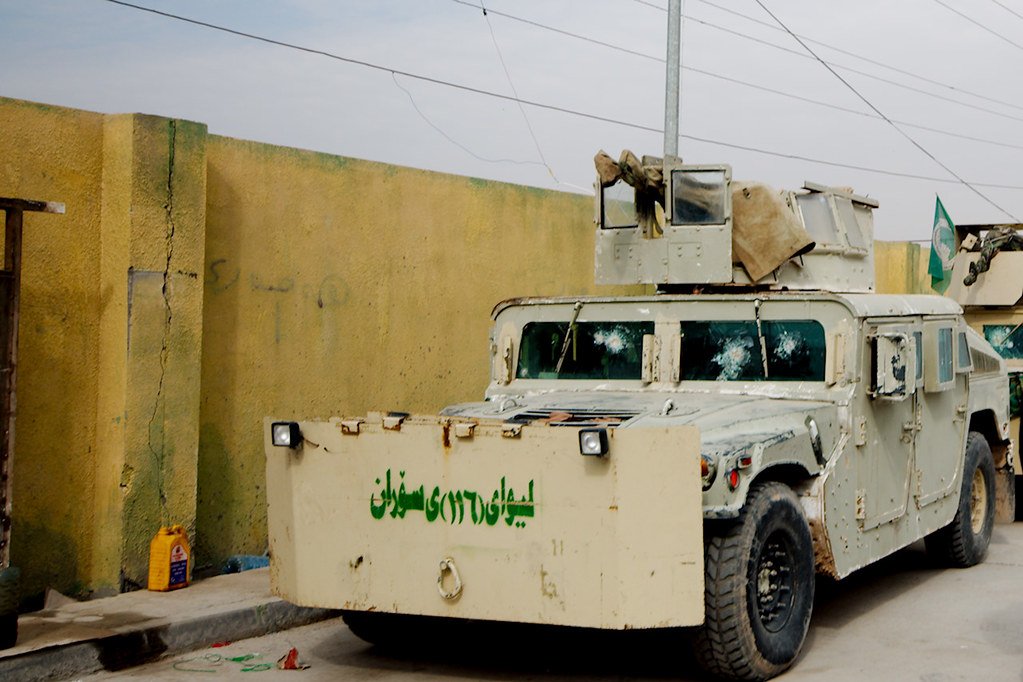
Built as certified?
So the manufacturer has now constructed, built and destroyed a vehicle and got it certified. If you go there as a customer and order a VR7 Land Cruiser, you should get one. But even there, practice shows that this is not necessarily the case. In the past year alone, there have been several cases where the manufacturer has used other steel or other windows when building the vehicles for customers to save money. And who is supposed to notice? You would have to check every single car with the certification data sheet in hand. In practice, that doesn’t happen. We do. No one else does.
Even at the German manufacturers these things happened. An employee explained to me that a seat rail was mounted further inwards to have more distance to the B-pillar. They had to repeat this part of the certification. So as a customer, you have to be able to check the vehicle in details or call in an expert – who you then have to trust again.
In practice, however, the problems are often much simpler: tires are changed again and again without looking at the correct load index or runflat system. Surprisingly few drivers can read the numbers on the edge of the tire. But these tell you at a glance whether the tire will hold the load and how old it is. Much more often than by gunfire, vehicles are damaged by burst tires.
The price
Usually one gives the price only for the conversion of the vehicle. So the customer buys a Land Cruiser normally from Toyota. The manufacturer receives it, converts it and returns it to the customer. With the cheapest supplier, I was offered the conversion for US$15,000 per vehicle if the quantity was sufficient. For a moment I was speechless. Labor, material and, so to speak, a share of the costs for development at this price? That couldn’t be right. So I took a look at the car. The windows were a bit blurry, the chassis was at its limit and the windows could not be lowered. I would rather use a Dacia. Normal conversion for certified vehicles costs are around $60,000 – $80,000 for a basic model.
What about the real world
So in practice, you have to trust the seller, the manufacturer and the certifier in many areas. Often the vehicle is bought by someone who has never seen it and who has to buy a certain amount of vehicles for a certain budget – and never heard of independent certifications. Many things have to be decided: Stronger hinges? Sunroof? Blast-proof door bolts? Diesel or gasoline? And the usual answers are: Hinges? Yes! Sliding roof? No – well… and if electric. Blast-proof door bolts? Sounds safe – so sure. And as engine the gasoline engine, which has more power. And already you have some problems.
A sunroof may sound like a superfluous extra, the door locking with a mechanical bolt like more security. But the devil is in the details: If a booby trap like an IED is detonated next to the vehicle, the whole car is first compressed up to 10cm and then pops apart again. This can cause the doors to pop open, which is why the additional locks are offered. However, these tend to warp in the process – the door is blocked. Then a roof hatch can be used to escape – but not if it is electric and the battery died. The gasoline engine has more power – but you almost never need it. And gasoline burns, diesel actually does not. You don’t want to survive the attack and then burn in the car.
But a much more fundamental question is: What is your thread analysis? Kidnapping or attack? AK47 or Mines? So does the attacker want one to survive or die? Does one have help nearby, like the police? Or do you have to get out yourself? And there are also very simple problems: What about emission standards in your country?
Once you’ve considered all that, you still have to be aware of one thing: It’s physics – not Harry Potters magic spell. You’re not invulnerable. A normal car accident can kill you in an armored vehicle. Or the energy a mine transfers to your vehicle when you drive over it. And just having a dirty or dusty car inside can be a safety hazard: If a projectile strikes, the shock wave from the impact spreads further inside the vehicle. Dust from all the cracks flies up and collects in the air. This is usually the moment when you inhale heavily from shock or breathe faster due to excitement.
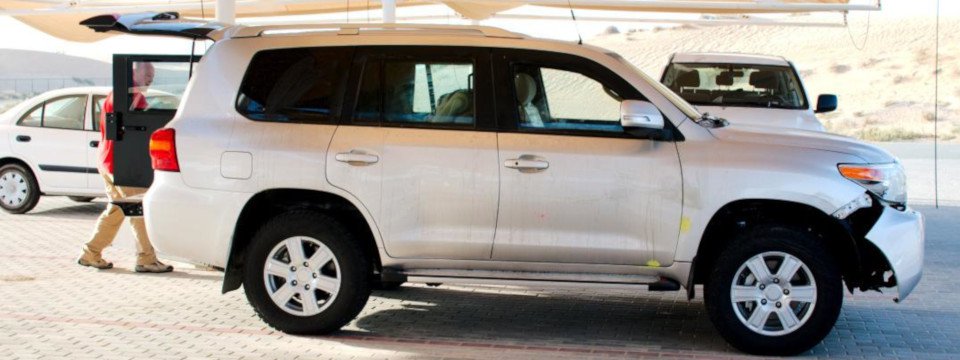
In the meantime, I can quickly tell whether I trust the car or not by doing some simple tests in the parking lot. Other people don’t know anything. They like to do the „douche test“, knock twice the side window and say: „woooooow that’s thick“.
I don’t want to take that away from them. It’s better to feel good and die quickly than to worry for a long time beforehand about what can happen to you.

